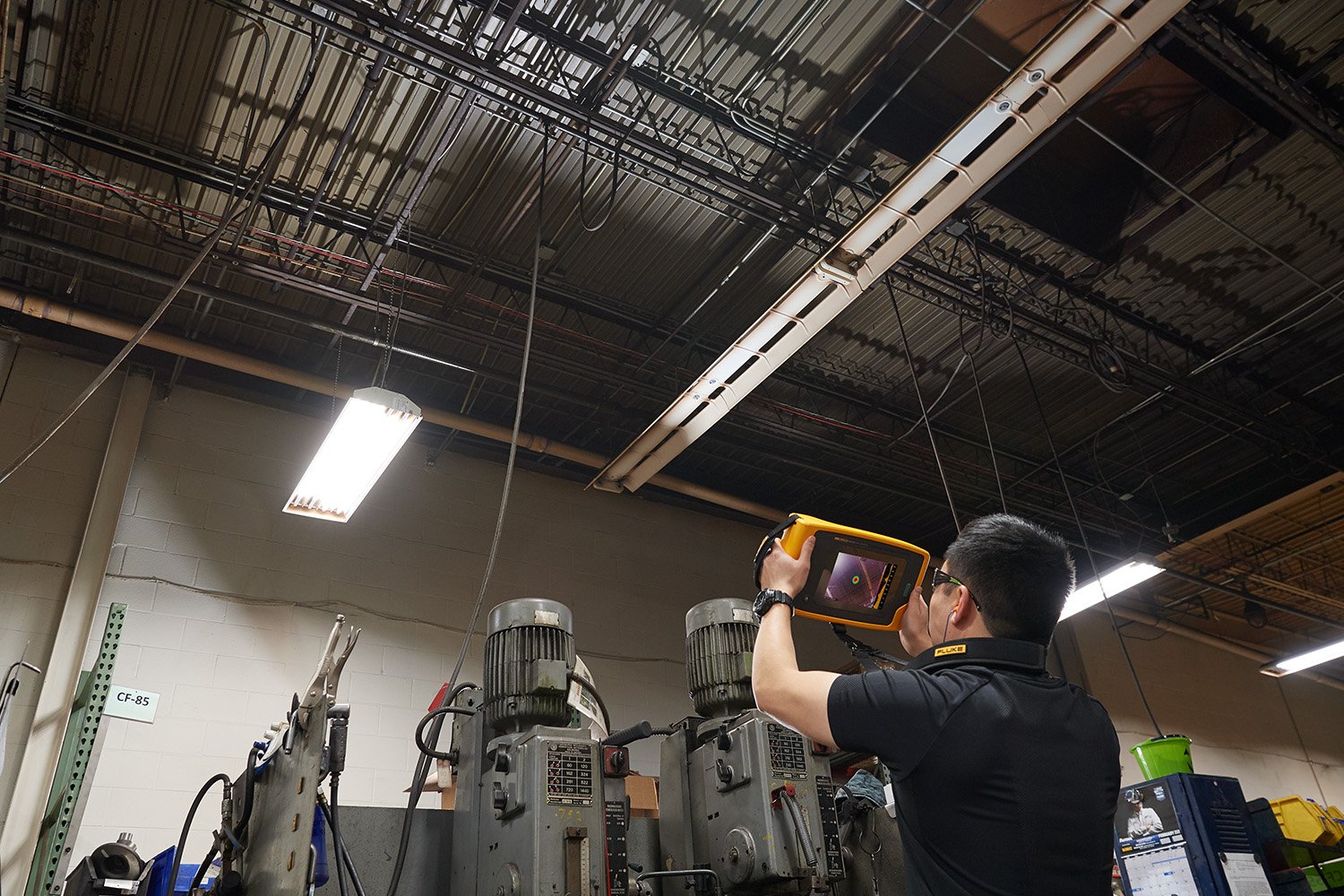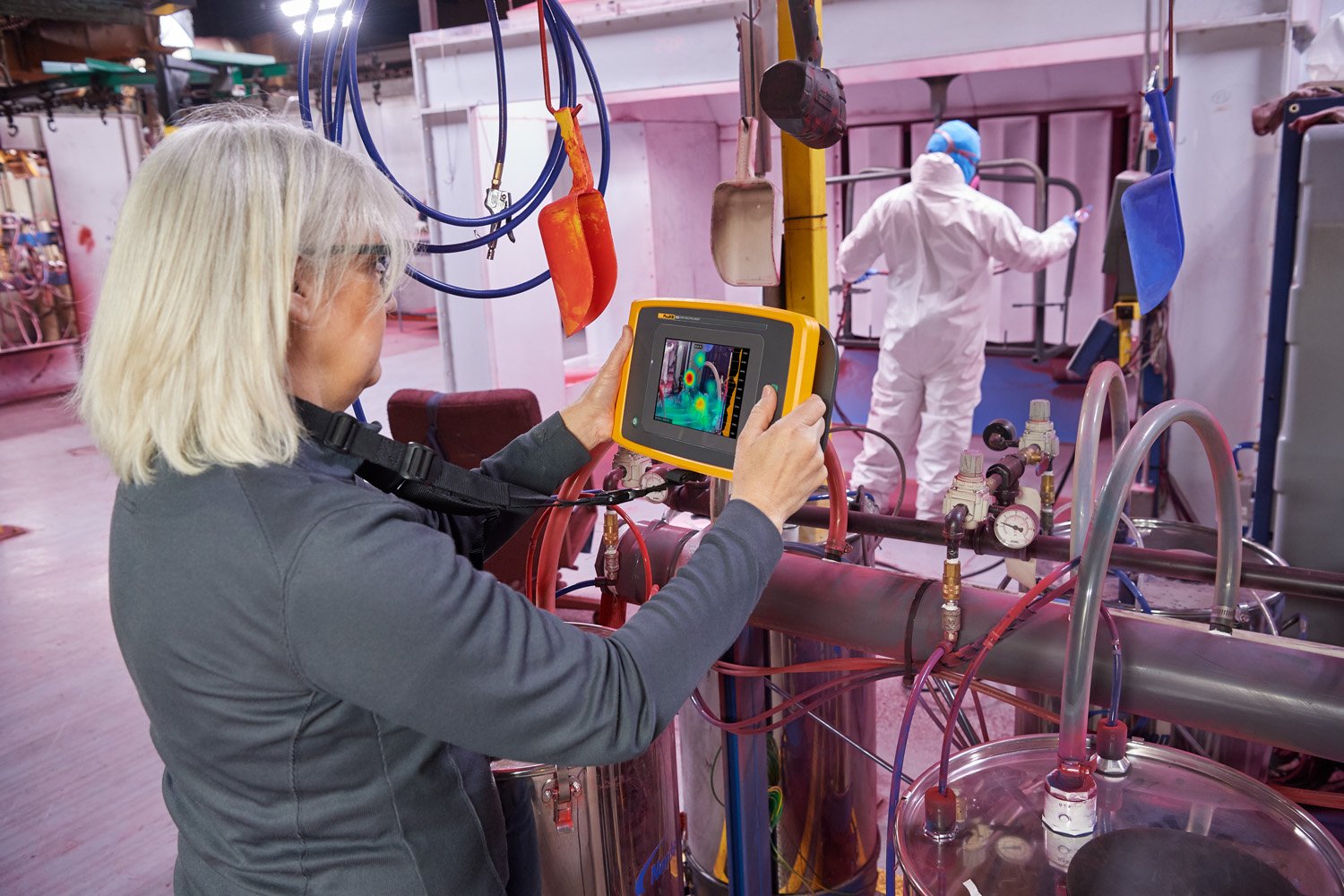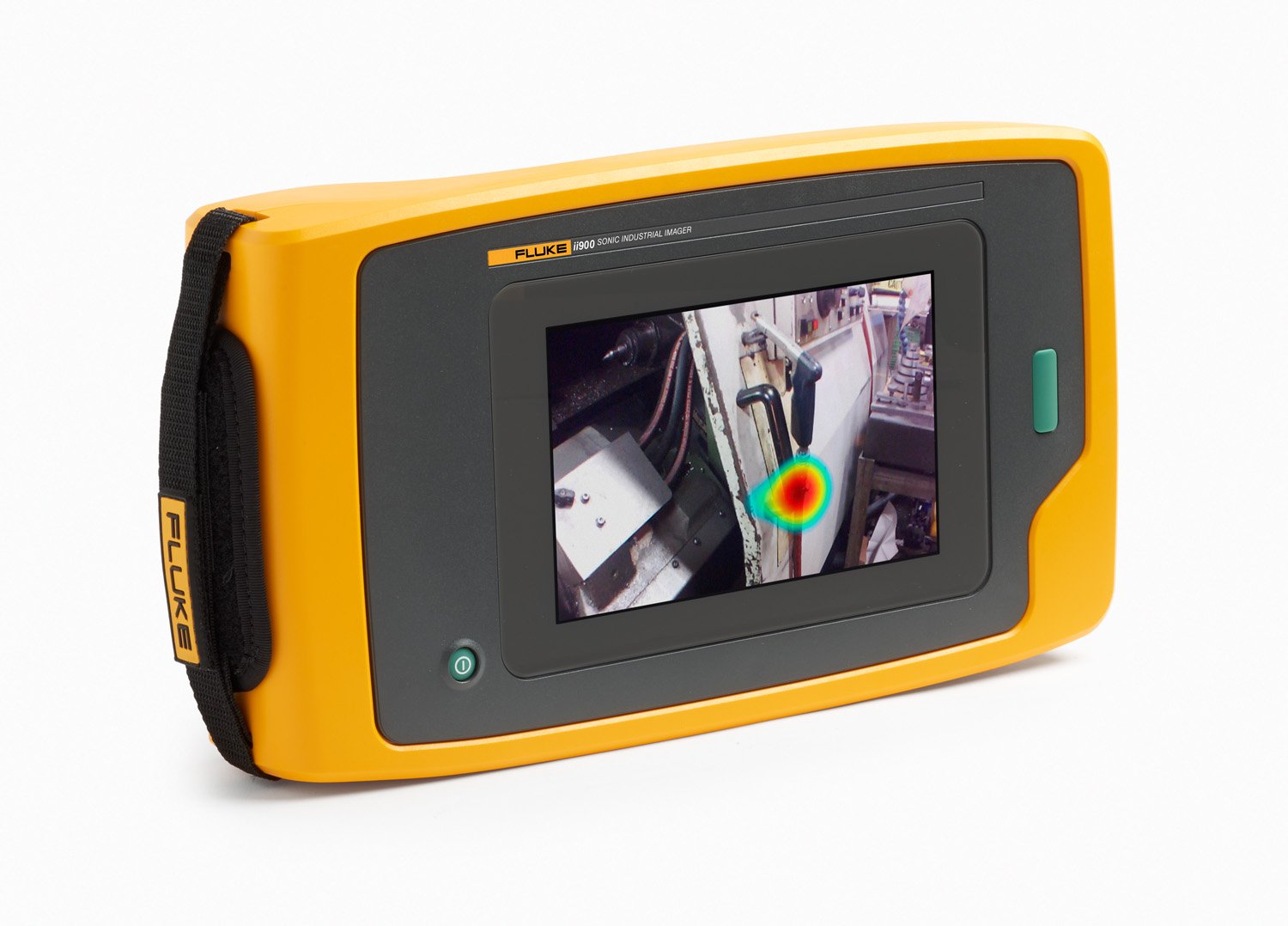Compressed air is the food and beverage industry’s “fourth utility” after the big three of water, electricity, and natural gas. The reliability of this fourth utility depends on predictable air pressure, which means even small leaks can come at a high price.
Here’s a look at air leaks commonly found in the food and beverage industry, along with best practices and technologies to address them.

Food and beverage manufacturers have unique considerations when it comes to compressed air leaks because product consistency is critical to brand reputation and compliance, especially since production plants and equipment are subject to strict controls and regulations to avoid contamination.
In food and beverage plants, multiple air compressor assets connect through pipes to deliver compressed air to move product, operate pneumatic tools or pump liquids for a variety of purposes in production chains, packaging, and cleaning. Here are some examples:
- Snacks and nitrogen air cushioning: Nitrogen flushing is used to fill bags to air cushion delicate snacks to prevent damage. Oxygen is excluded for use because it reacts with food products, especially those made with oils.
- Food and cleanliness: Compressed air is purified and filtered to ensure food safety and to maintain the proper pressure dewpoint needed to prevent microbial growth.
- Fruit and vegetable peeling: In preparation for packaging, pressurized air jets efficiently remove peels from fruits and vegetables. High-pressure compressed air is also used to cut foods as a cleaner alternative to knives or blades.
- Breweries, fermentation, and bottling: Compressed air increases oxygen levels to complete the bacterial fermentation process. Air compressors reduce residual oxygen during bottling and bottles are flushed with carbon dioxide and filled with beer using pneumatically powered machinery. Because breweries operate in warm environments, systems are more vulnerable to leaks.
Air leaks at any point can slow down production, affect product quality, create safety or contamination problems, or all four — and damage the bottom line.
The hidden costs of compressed air leaks
Compressed air and gases need to be available at a specified pressure to achieve production and quality targets, yet many facilities accept air leaks as a cost of doing business. Those costs can be high in energy loss but often in other hidden ways such as efficiency, quality and downtime.
According to the Compressed Air & Gas Handbook Seventh Edition published by the Compressed Air & Gas Institute (CAGI), “A single ¼-inch leak in a compressed air line can cost a facility from $2,500 to more than $8,000 per year. Locating and fixing leaks will result in significant savings depending on pressure requirements and energy costs.”
Benefits of compressed air system testing
- Increase efficiency through regular maintenance: Compressed air systems not regularly maintained after installation could lose 20 to 30 percent of compressed air in leaks alone.
- Reduce expense: Pressure drop is often misdiagnosed as equipment failures, resulting in additional capital investment in new air compressors.
- Decrease downtime: Lost production time from pressure drops or installing new equipment will require equipment downtime and negatively impact planning schedules. Unplanned downtime costs an average of $200 per minute making it critical to avoid.
- Improve product quality: Insufficient pressure results in defective package sealing or the edible product not meeting consistent texture or flavor requirements.
- Improve product safety: Leaks that cause contamination lead to high costs from waste, compliance penalties and reputational damage.
- Decrease carbon footprint: Systems with air and gas leaks become inefficient, which impacts a company’s carbon footprint and prevents them from meeting sustainability or environmental targets.
The formula used to determine the extent of compressed air leaks at a facility is: Leakage (%) = (T x 100) ÷ (T + t) T = onload time (minutes), t = offload time (minutes).
If the compressed air system is configured with start/stop controls, start your air compressor when there is no system demand — after hours or off-shift. Then take several readings of compressor cycles to determine the average time to unload the system.
Air leak detection and correction methods
The first step in controlling processing and costs is to find air leaks at their point of origin. Here’s a list of common leak points:
- Condensate traps
- Couplings
- Fittings
- Flanges
- FRLs (filter, regulator, lubricator combinations)
- Hoses
- Packings
- Pneumatic holding tanks
- Quick disconnects
- Threaded pipe joints
- Tubes
- Valves
Air leaks are a big issue because they’re abundant and hard to find. Once found and fixed, more leaks tend to pop up due to normal wear and tear on the system.
While it may not be possible to eliminate every single leak, it is possible to reduce the total number with focused inspection using traditional detection methods. With these methods, once a leak is located, a paper tag is used to mark the spot. Four traditional detection methods include:
- Sound: Hissing indicates leaks, which means the leak is sizeable since only a sound level greater than 60 dBA is audible without leak detection equipment. Since most plants are noisy and often require worker ear protection, listening for leaks must occur during downtime — between shifts, on weekends, or during scheduled maintenance.
- Water and soap: Technicians spray soapy water on areas of audible leaks, and where bubbles appear is the leak spot. The method is protracted, far from precise, and requires cleanup since soapy water overspray creates a slipping hazard. In some clean and contamination-protected processes it is not allowed.
- Ultrasonic acoustic detection: During downtime, technicians wearing earphones scan potential leak spots with a parabolic-dish or cone-shaped accessory. When a leak-indicating noise is detected, the technician switches to a wand-shaped device that must be held a couple of inches from the leak to pinpoint the exact location.
- Using outside experts: Engineers or other experts are engaged usually once a year to save money and disruption. They use one or all the traditional techniques, and repairs and checks handled by in-house technicians.
None of these methods is foolproof and most require downtime, which leads to lost time and money.
Compressed air leak testing helps coffee roaster easily identify energy savings of 10%
Project engineers at a coffee roasting company participated in a pilot study using industrial acoustic imaging technology in a facility where conditions tend to generate many leaks. The test identified the company could save more than 10% per year in energy consumption with the new leak detection device.
The 300,000-square-foot facility houses a coffee roasting and packaging area, coffee wet process area, and tea blending and packaging area. All operations require proper air pressure to efficiently complete processes and traditional leak detection methods couldn’t keep up.
On an average day, the facility uses from 1,000 to 1,600 cubic feet per minute (cu. ft/min) of compressed air. The company’s compressed air system, which consists of five air compressors totaling 585 horsepower, powers automation and tubing used to feed the operation’s nitrogen generation system. Nitrogen is used to improve the quality of coffee. Additionally, the inert gas is used for blending of tea.
With the Fluke ii900 acoustic imaging camera, the team identified potential energy savings of 10%, which is in keeping with its goal of improved sustainability. The new approach also showed how the team could simplify the air leak detection process, allowing the project engineers to keep staff working on products rather than stopping for long periods to detect and fix air leaks.

See air leaks for the first time with an acoustic imaging camera
An advancement in leak detection technology in the form of a portable acoustic industrial imager is making it easier to detect leaks and avoid lost profits.
The Fluke ii900 air leak detector allows users to locate and view air leaks on an LED screen in real time with a point-and-shoot process that doesn’t require a specialized technician. Most users can get up to speed in about 10 minutes. Technicians can also work quickly from a safe distance while equipment is running. Additionally, the device makes it easier to find leaks in hard-to-reach spots or to distinguish between multiple leaks within the same area.
The hand-held imager contains an array of ultra-sensitive microphones that detect sounds in both the human hearing and ultrasonic ranges for sound and then present them visually. The device then applies proprietary algorithms to the results and instantly produces a visual map of the leak on screen. The image of the leak is layered over a visible-light image of the area so operators can quickly pinpoint the leak location.

The Fluke ii900 can also be used to verify successful repairs. If there’s a question, scans captured as stills or live videos can be shared and discussed with colleagues. The captured images eliminate the need to climb ladders or mark the leak with the usual fragile physical tag.
How to reduce the costs of hidden air leaks
Using common or new detection methods, there’s no time like now to remove the hidden costs and unnecessary waste of air leaks. Here are some best practices to follow:
- Take a systems approach: Often fixing a leak will increase system pressure, making smaller leaks larger, affecting the entire system. Combine changes with overall strategies for improved energy use and more robust control systems. Although they may be challenging to make, capital purchases often yield energy savings that substantially reduce payback time.
- Audit frequently: Frequent auditing—more often than the typical yearly or quarterly leak inspections—saves time, money, and resources over the long run, even if you need to shut down equipment. New imaging technology means you can zero in on leaks and fix them on an ongoing basis without losing valuable production time.
- Confirm root causes of pressure drops: Pressure drop can be misdiagnosed as equipment failure. Before making capital expenditures, leak checks and fixes may save thousands or hundreds of thousands of dollars and help instantly regain capacity.
- Log and track and verify over time: It’s important to record exactly where leaks have occurred since these weak spots tend to be where new leaks will happen and inspect those areas regularly. Logging information online allows data to be easily shared and used to impose discipline on the review process. Check soon after the repair is made to determine whether leaks have either been eliminated or need further attention.